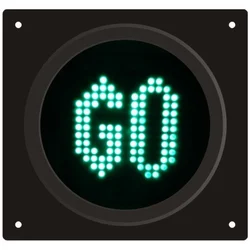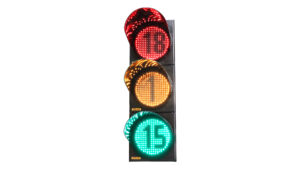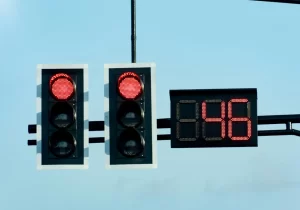Traffic congestion is a usual problem of urban areas in many cities globally. One of the solutions being adopted to relieve this issue is traffic signal countdown timers by many urban planners. These installations allow drivers and pedestrians to see a visual timer until the next change in traffic signals, aiding them better time their movements. In this article, learn how to quickly establish countdown timers for traffic signals in an urban environment encouraging through better flow and increased safety.
installations allow drivers and pedestrians to see a visual timer until the next change in traffic signals, aiding them better time their movements. In this article, learn how to quickly establish countdown timers for traffic signals in an urban environment encouraging through better flow and increased safety.
Feasibility StudyIEnumerator
The first thing to do is research, — how feasible of this goal? Start by examining the way traffic currently behaves, what times of day are busiest and how it moves along. Use this data to identify which primary intersections would most benefit from countdown timers. Moreover, one must analyze costs and budget. Calculate the purchase, installation and on-going maintenance costs of the countdown timers. Take into account likely sources of funding, budgetary restrictions
Countdown Timer Systems: How To Choose
Now, you need to pick the right countdown timer solutions. These are available in different types like built-in timers within traffic signal heads or as standalone units. Make compatible with existing traffic light controllers the selected timers. So, always check for things like weather resistance, visibility torture test score type thing, power efficiency and you why not make sure that the best LED conversion kits features remote monitoring capabilities. It is also necessary that you choose a Bluetooth speaker on the basis of its quality, warranty and support services.
 Integration with Traffic Management Systems
Integration with Traffic Management Systems
The next step is to select the systems and integrate them with an existing traffic management system. The countdown timers must synchronize perfectly with the traffic signal controllers. It could be to upgrade the existing controllers or maybe bring in new software into play. Choose between wired or solar-powered systems (which depending on the system might still require battery backups). Create a communication platform for the recently active and through this certification process appropriate building of those that have developed such sites!
Installing The Countdown Timers
Installation Next Steps Undertake intersection preparation for installation (e.g. civil works such as piling, pole placements and electrical connections) Safety precautions should be put in place to prevent delay, such as traffic bypasses or work during off-peak hours. Obey the manufacturer demands when fitting, ensuring proper align last but not least be seen by all road users.
Testing and Calibration
Once you install it, testing and calibrating is a must. Verify with countdown timers functioning correctly for the traffic signal phases. Timer accuracy and synchronization fine-tuning. Start with a pilot at few intersections before the full-roll out to collect data and make any needed changes.
1) Public Awareness and Education
Public awareness and education are essential for the effective implementation of countdown timers in traffic signals. Publicise the new system through a publicity campaign to tell your members and customers about how it works, what this means for them and how they can use. Educate drivers, pedestrians and cyclists how to interpret the countdown timers; Conduct educational programs for all user types
Monitoring and Maintenance
Countdown timers need to be checked regularly, however you should also perform a basic survey on the signage that has not been tested. Create a process for real-time monitoring to validate whether the timers are functioning as expected. Create A Service Schedule For Regular Checks, Cleaning And Repairs. Creating a feedback system to enable people give the heads up on any issues as well.
Evaluation and Improvement
Regularly Check Performance:,Finally, one can compare the performance of countdown timers. Review indicators such as increase of traffic, reduction in accidents and satisfaction by the public. This data can then be used to make improvements… either through technological upgrades, or changes in operational procedures.
Conclusion
Finally, the application of traffic signal countdown timers in urban regions requires careful and appropriate handling. With a feasibility study, selection of the appropriate systems, integration to traffic management system (if available), installation and testing as well as awareness program for public use along with maintenance — cities can experience breakthrough in terms of improvement in their Traffic Flow & Safety! Adopting such technology could create a smarter and safer city from the ground up, which in turn benefits all road users.
